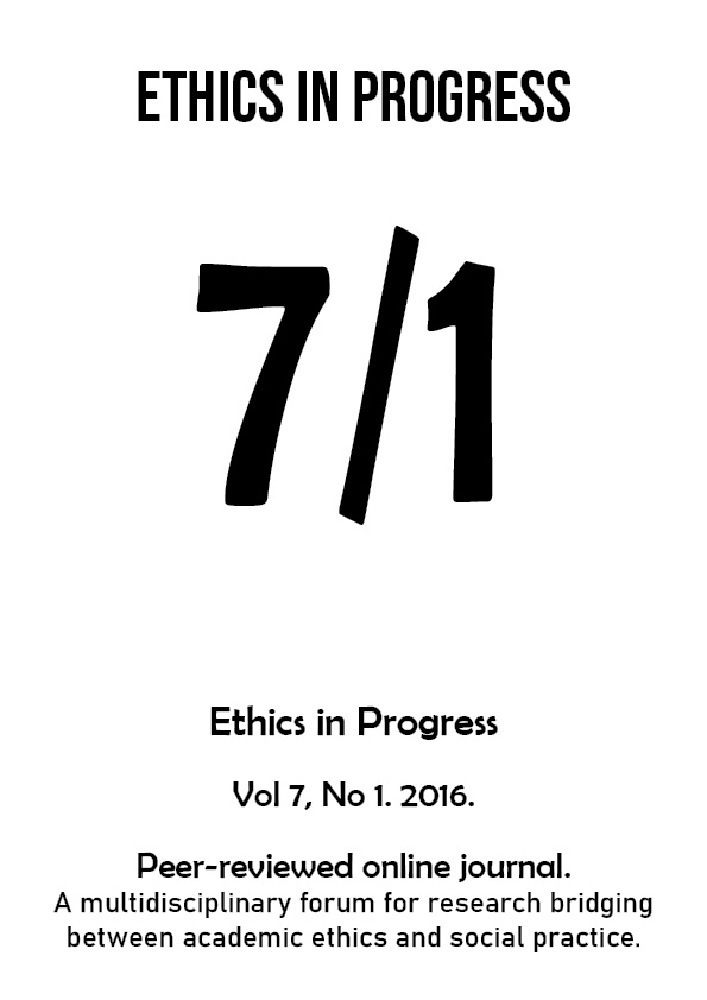Abstract
This short review paper focuses on Georg Lind's approach to the moral competence as described in his recent book (2016) How To Teach Morality? Promoting Deliberation and Discussion, Reducing Violence and Deceit. Berlin: Logos Verlag. Lind's dual-aspect approach is discussed as one of the leading conceptions of personal moral competence and moral cognition today. Intuitionist approach and "embodied cognition" are not enough, the author (E. Nowak) claims. As participants of social contexts and institutions, we need manifest, discoursively articulated reflection, self-reflection, and conversation. However, Lind's hypothesis of two leyers of morality, i.e., a conscious and unconscious finds evidence in cognitive sciences too. Lind's approach is not as reductionist as that of radical cognitivists. On the contrary, it combines all relevant aspects of moral cognition discussed right now, worldwide – when cognitive sciences flourish and the challenges for moral mind grow up dramatically.
References
Bloom, P. 2016. Against Empathy: The Case for Rational Compassion. New York: Random House.
Bourdieu, P. 1987. Distinction: A Social Critique of the Judgement of Taste. Cambridge: Harvard University Press.
De Jaegher, H. 2009. “Social Understanding Through Direct Perception? Yes, By Interacting.” Consciousness and Cognition, Vol. 18: 535–542.
Gallagher, S. 2005. How the Body Shapes the Mind. Oxford: Clarendon Press.
Greene, J. 2015. “The Rise of Moral Cognition.” Cognition, Vol. 135: 39–42.
Greene, J. 2009. “Dual-Process Morality and the Personal/Impersonal Distinction: A Reply to McGuire, Langdon, Coltheart, and Mackenzie.” Journal of Experimental Social Psychology, Vol. 45: 581–584.
Greene, J. & Haidt, J. 2002. "How and Where Does Moral Judgment Work?” TRENDS in Cognitive Sciences, Vol. 6(12): 517–523.
Habermas, J. 2010. “Philosophical Notes on Moral Judgment Theory.” In Lind, G., H.A. Hartmann, & R. Wakenhut (eds.) Moral Judgments and Social Education (pp. 3–20). New Brunswick – London: Transaction Publishers.
Haidt, H. 2001. “The Emotional Dog and Its Rational Tail: A Social Intuitionist Approach To Moral Judgment.” Psychological Review, Vol. 108: 814–834.
Lind, G. 2010. “Moral-Cognitive Development.” In G. Lind, H. A. Hartmann, & R. Wakenhut (eds.) Moral Judgments and Social Education (pp. 21–53). New Brunswick – London: Transaction Publishers.
Lind, G., & R.H. Wakenhut. 1985. “Testing for Moral Judgment Competence.” In G. Lind, H. A. Hartmann, & R. Wakenhut (eds.) Moral Judgments and Social Education (pp. 79–105). New Brunswick – London: Transaction Publishers.
Lind, G. 2016. How To Teach Morality. Promoting Deliberation and Discussion, Reducing Violence and Deceit. Berlin: Logos Verlag.
Lind, G. & E. Nowak. 2015. “Kohlerg's Unnoticed Dilemma – the External Assessment of Internal Moral Competence.” In B. Zizek, D. Garz, & E. Nowak (eds.) Kohlberg Revisited (pp. 139–154). Rotterdam – Boston –Taipei: Sense Publishers.
Prehn, K., I. Wartenburger, K. Meriau, Ch. Scheibe, O. R. Goodenough, A. Villringer, E. van der Meer, & H. R. Heekeren. 2008. “Individual Differences in Moral Judgment Competence Influence Neural Correlates of Socio-normative Judgments.” Social Cognitive and Affective Neuroscience, Vol. 3: 33–46.
Sloan, P. 2002. “Preforming the Categories: Eighteenth–Century Generation Theory and the Biological Roots of Kant's A Priori.” Journal of the History of Philosophy, Vol. 40: 229–253.
Strawson, G. 2007. “Episodic Ethics.” In D. Hutto (ed.) Narrative and Understanding Persons (pp. 85–116). Cambridge: Cambridge University Press.
De Waal, F. 2016. Are We Smart Enough To Know How Smart Animals Are? With Drawings by Author. London – New York: W. W. Norton & Company.





